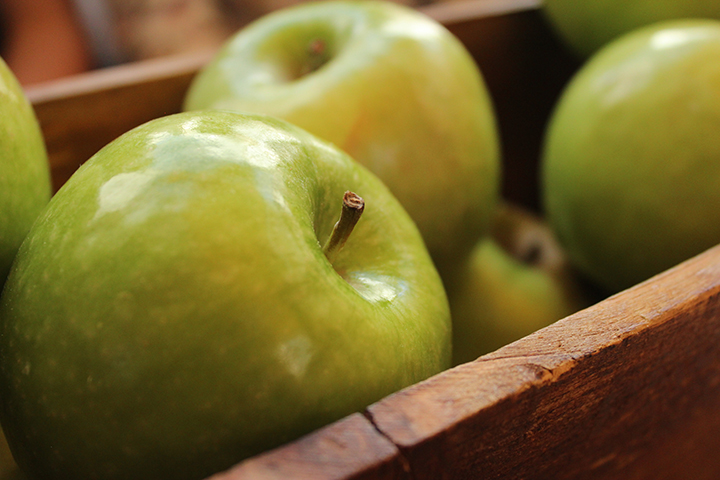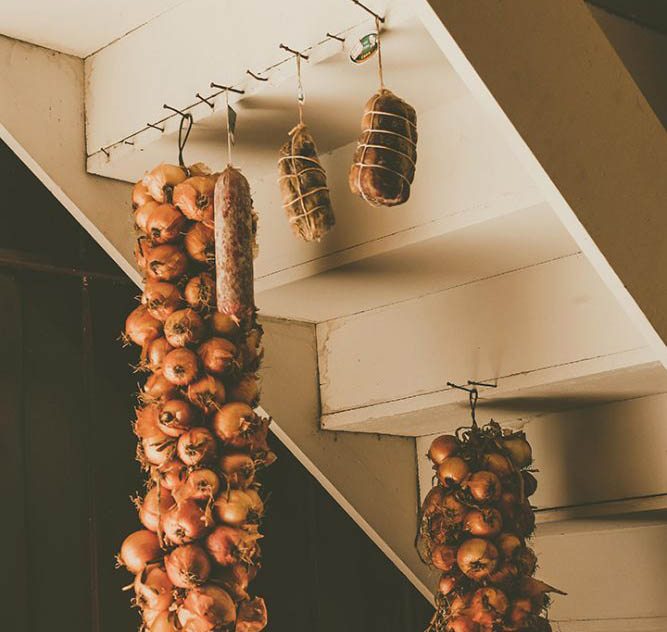Here are some simple tips on how to
store apples for a long, long time
By Don Fallick
Almost any kind of apple will keep for three or four months, or even longer, if stored properly. It’s cheap and easy to do. All you need is newspaper, a box or basket, and apples. A root cellar is optional, but not necessary. The main causes of apple spoilage are time, bruises, and contact with a rotten spot on another apple.

Time
Time can be stretched by selecting long-keeping varieties of apples for storage. Tart and thick-skinned apples like Jonathans generally keep longer than sweet or thin-skinned ones like Delicious. Good keepers also have very firm flesh. The best keepers I have found are Spur Winter Bananas— They are yellow and tart at harvest, but get redder and sweeter, and actually taste better after a couple of months in storage.
Contact
Prevent contact between apples stored for the winter by wrapping them individually in sheets of newspaper. The easiest way to do this is to unfold a section of newspaper all the way and tear it into quarters. Then stack the quarters. Avoid sections printed with colored ink, which contains poisonous heavy metals. Place an apple on top of the stack and fold the top sheet of paper up around the apple, wrapping it in paper. Give the corners a slight twist—just enough to make them stay wrapped. If you twist them too hard, the paper will tear. It’s not necessary to exclude air. Just twist hard enough so the paper doesn’t come unwrapped before the apples are boxed. The paper prevents contact between apples, so just one rotten apple won’t spoil the whole bunch. With practice, you’ll be able to wrap and store apples as fast as you can scan them for bruises and sort them.
Sorting
Always handle apples carefully, to avoid bruising them. Apples with even small bruises must never be stored with “keepers.” Only perfect apples should be used for long-term storage. Even minor imperfections speed spoilage. While you’re wrapping, check each apple for cut skin, soft spots, or bruises. Even bruised apples taste fine when they’re fresh, so sort the best culls into a box to be eaten right away. If there are too many, make apple pie filling out of the excess. Use culls with extensive blemishes for cider. Or cut out any really gross parts and make applesauce.
Storage
Boxed apples need to be kept in a cool, dark spot where they won’t freeze. Freezing ruptures all of an apple’s cells, turning it into one large bruise overnight. The usual solution is to store apples in a root cellar. But root cellars often have potatoes in them, and experts say that apples and potatoes should never be stored in the same room. This may seem incongruous, but there is a reason. As they age, potatoes release an otherwise harmless gas that makes apples spoil faster. If you can keep the gas away from your apples, they will keep just fine. Just don’t store them right next to potatoes.
I keep wrapped apples in a cardboard box. It need not be airtight, just tight enough to impede air circulation. I’ve kept apples in an unheated basement, a pantry, an enclosed porch, an unheated attic, even in a root cellar, potatoes and all. Using these simple methods, I have kept ordinary apples until late February, and Winter Banana apples into March.







Comment